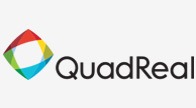Since your business is unique your signs will also be unique. The time required to produce a custom sign depends on a number of factors. Identifying the details; size, material, graphics will involve the interaction between the customer and sign maker. The production is handled by the sign maker. While the permitting and installation involves 3rd parties.

Polished brass letters mounted on acrylic
1. Client interaction
As a client, you determine your need for new signage. This could be the opening of a new facility, a rebranding initiative or part of your regular updates. The earlier you get a professional sign company involved in the process the smoother the project will go. You will be asked a series of questions like the kind of sign required, whether interior or exterior, and the purpose of the sign. You will also specify whether the sign will look contemporary, futuristic or traditional. It is an excellent proposition to clearly state the material on which the sign will be made. You will also be asked about budget and size of the sign. The sign company will ask whether you already have existing digital graphics, designs and logos for this particular sign. All this information is needed to begin the sign making process.
2. Brainstorm
Clients have a minimal role to play in this part. It is the duty of the sign creatives to craft the best signage. This will depend on the particular needs of the client. The following materials are included into the thought process:
- Sample materials
- Dimensions of the sign, along with widths
- Sign setting
- Type of business
- Target life span of the sign
- Climate
- Graphics and logos
- Sign purpose
This process takes anywhere from an hour to a few weeks. If the sign selected is a typical sign the options are readily available to be used for the design. If there is an unique requirement this would require identifying new suppliers or fabricators to produce the desired sign.
3. Options
This step comes after the conclusion of the brainstorm session. A number of options are provided to the client to review. The team at the sign company will also give you options that are the best fit for your budget, needs and wants. The customer reviews the options and requests clarification if required.
4. Revisions
No project can be called complete without revisions. The sign company will change anything the client wants to be changed. This is an important step and the client must state the preferred option.
5. Bid and contract
A quote is written at this stage. This quote is reviewed and any doubts the customer has must be clarified with the sign maker. Once accepted the quote becomes the order.
After the client selects the best option for the project and decides on the required revisions, a project proof (a rendering of the completed sign) will be signed off to provide confirmation that production can begin.
6. Permitting
Most city or town authorities will not permit any person or business entity to install any exterior sign without its due permission. This extends to canopies and awnings as well. Only those entities who have a registered sign erector company (and in many cases signed a bond) with the authority can apply for such signs and can install the proposed sign, canopy and awning. The time needed for a permit varies and depends on the authorities involved. Allow a minimum of 2 weeks for a simple sign that is covered by the by-law and upwards of 12 months if an amendment is required.
7. Manufacturing

Colour management to ensure the images are the right colours
The manufacturing of signs may involve a number of processes. This is dependent on whether retro-reflective sheeting utilizes pressure sensitive or a heat sensitive adhesive and whether silk screening or etching among other colouring techniques are utilized. A number of signs are made through the following process:
- Cutting blank: An aluminium or steel sheet is cut to form a sign blank. Corners are rounded via a punch machine. The holes to be used for mounting such a sign are either drilled or punched.
- Checking blanks: These are checked for any contamination or defects. The blanks must not have any grime so that the background sheet could adhere in a proper manner.
- Degreasing blanks and cutting retro-reflective sheets: The surface of the blanks is cleaned with naphtha or mineral spirits to remove the greasy fingerprints. The sheets are cut.
- Applying sheet to the sign blank and heating the sign: The adhesive liner of background sheeting is taken away and the latter applied to dry blank surface. Then the sign is cranked through squeeze roller applicators to remove the air-bubbles trapped between blank and sheeting. The sign is then positioned inside a lamp vacuum applicator. The hand roller is used to eliminate the air bubbles.
Depending on the steps required the manufacturing can take a few hours to a few months.
8. Installation

Exterior sign Installation with a crane
To ensure all the effort that went into the design and fabrication of the sign is not wasted the installation needs to go smoothly. Depending on the size of sign and where it is to be installed specialized equipment maybe required. This could be simple ladders, boom trucks or large cranes and rigging equipment. The more specialized the equipment the longer it will take to arrange for the equipment and the longer the install will take.
Installing a sign may take anywhere from one hour to a whole day depending on the sign and its location.
From concept to install a sign may take 1 day to 1 year. Contact a professional sign company early in the process to ensure your sign is installed when it is needed.

Happy Customer













